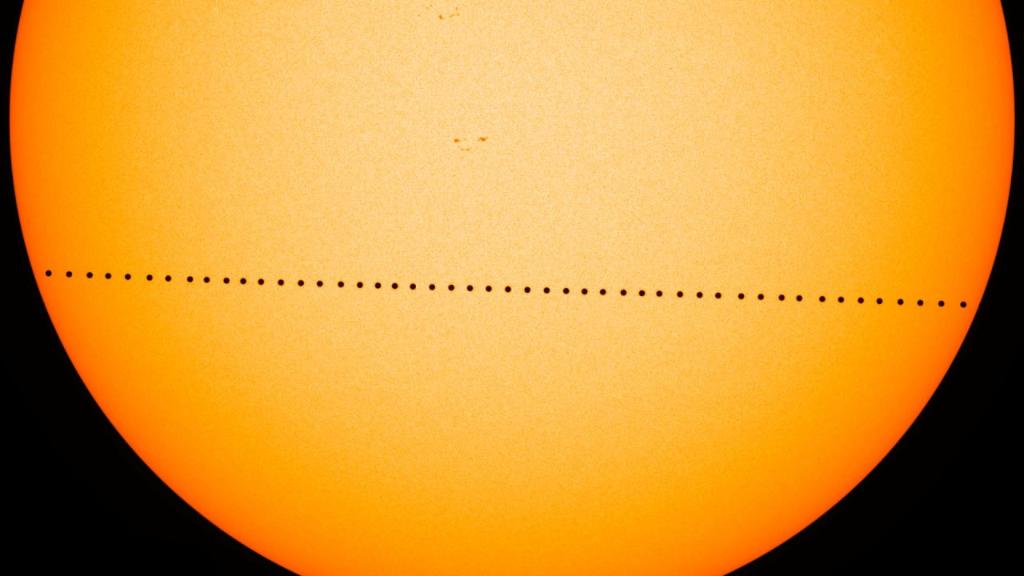Mercury passed between Earth and the sun last week, a rare celestial event scientists say happens about a dozen times per century — the next one won’t happen until 2019. But luckily for us, the National Aeronautics and Space Administration (better known as NASA) captured some amazing time-lapse footage of Mercury’s May 9 transit.
The smallest planet in the solar system appeared as a small black dot with Earth’s nearest star as its backdrop.
#ICYMI: Mercury was visible as a tiny black dot crossing the sun on May 9. Composite pic: go.nasa.gov/1R2FOnS
Hinode, NASA’s 10-year-old solar observatory, used its X-Ray Telescope to track Mercury’s path.
#ICYMI: Here's the full #MercuryTransit. For 7.5 hrs today, Mercury was visible as a tiny black dot crossing the sun
According to NASA, the apparent wobble of Mercury in the time-lapse video is “an optical effect, called parallax, caused by Hinode’s changing perspective as it orbits the Earth.”
#SDO caught this view of Mercury just before it left the sun's disk! More at mercurytransit.gsfc.nasa.gov
In a post on its Tumblr page, NASA explained why Mercury’s visible sun-pass was such a rare spectacle:
Although Mercury whips around the sun every 88 days – over four times faster than Earth — the three bodies rarely align. Because Mercury orbits in a plane 7 degrees tilted 7 from Earth’s orbit, it usually darts above or below our line of sight to the sun. As a result, a Mercury transit happens only about 13 times a century.
The space agency also explained why they’re important:
Transits like this allowed scientists in the 17th century to make the first estimates of Earth’s distance from the sun. Transit observations over the past few centuries have also helped scientists study everything from the atmosphere of Venus to the slight shifts in Mercury’s orbit that could only be explained by the theory of general relativity. Because we know Mercury’s size and location precisely, this transit will help scientists calibrate telescopes on solar observatories SDO, SOHO, and Hinode.
Transits can also teach us more about planets — both in and out of our solar system. The Venus transit in 2012 provided observations of the planet’s atmosphere. Transits are also the main way we find planets outside the solar system, called exoplanets.
A day after the Mercury transit event, NASA announced that its Kepler mission to discover other Earth-sized planets in our galaxy has verified 1,284 new planets — the single largest finding of planets to date.
As NASA put it: “This gives us hope that somewhere out there, around a star much like ours, we can possibly one day discover another Earth-like planet.”





No comments:
Post a Comment